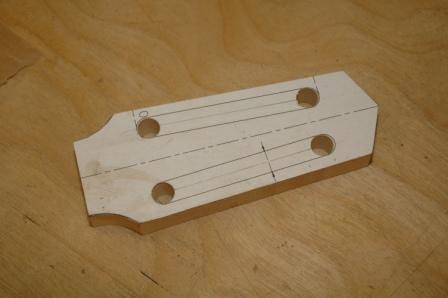Guitar 1002 – Hybrid tonewood arrives
November 21, 2010
Yesterday, Jim turned over cedar plates for the top, Palo Escrito back and sides, some kerf, fret wire and tuners for guitar 1002. I took this as a challenge to get started working.
Jim got the wood from LMI. I haven’t worked with cedar nor Palo Escrito. Here’s what they have to say about Palo Escrito: Palo Escrito is the premiere native back and side wood used by the luthiers in Paracho, Mexico. It is a true Rosewood, but differs from Indian Rosewood visually with slightly wider grain, more figure, and lighter color. It is also lighter in weight. Although Palo Escrito is a natural for flamenco guitars, classical builders like Kenny Hill and Dake Traphagen have enjoyed using it, and steel string builder James Goodall has been very enthusiastic about the tone of the guitars he’s used it on. Moderately priced and plentiful, each set is unique.
I’m working on the neck this weekend. A first for me, using Cedar for the neck wood. I measured the blank for cutting the 10 degree headstock angle, then used my bandsaw jig to cut. After truing with a hand planer, the headstock piece was rotated and glued.

This guitar will have the Spanish Heel, so that was taken into account when measuring and cutting the heel block stack.

It’s had a couple of hours to cure, so I removed it from the clamps in order to measure for the camatillo center strip construction.

Jim wants a tri-laminate neck, for stability and decoration. I’m constructing a 3/16″ wide camatillo center strip which mimics the blocked out neck.

After everything comes out of the clamps tomorrow, I’ll put my new planer to work getting square sides on the neck and the camatillo, then I’ll slice the neck down the center on the table saw, then laminate the three pieces.
Jim likes the headstock design from the Macaferri plans.

I lined up the tuning machines, and noted that due to the narrowing of the headstock toward the top, the tuning barrels will be too long and need to be trimmed back slightly to keep from jamming.